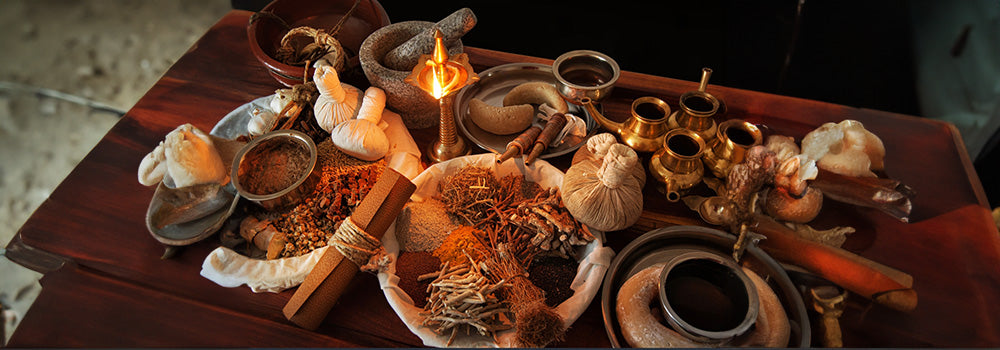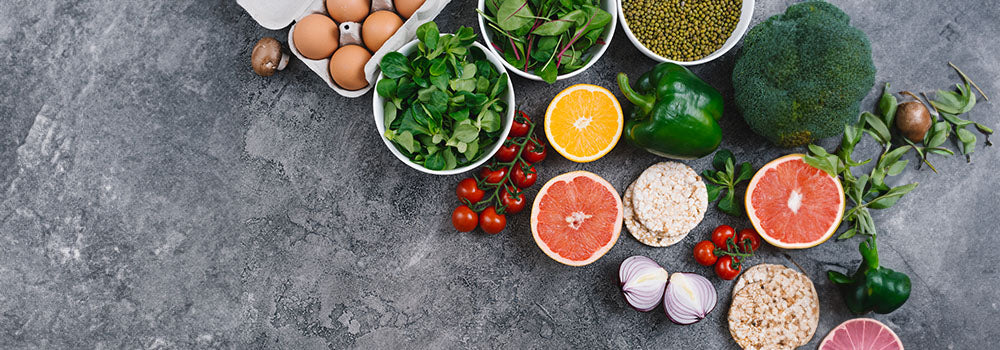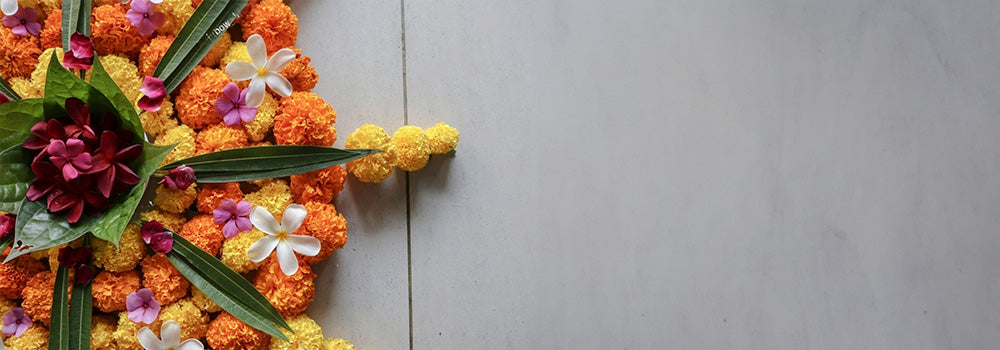In the vibrant mosaic of India, where traditions and cultures weave a rich narrative, the approach of the festive season heralds a profound connection to the ancient wisdom of Ayurveda. As the sun's golden rays kiss the land, a timeless rhythm awakens, inviting us to embrace not just the joy of celebration but also the art of holistic well-being.
Ready yourself for this season by connecting your daily rhythm to the one prescribed by Ayurveda. Read ahead to learn how to best treat your body during the festive season.
Navigating the Doshas during the Festive Season
As the festive season gracefully unfolds during the months of October and November, it coincides with the enchanting Sharad Ritu. It is necessary to identify the dominant dosha that takes over this period. With this knowledge, we can adapt our activities in a manner that helps us discover the path to harmonious well-being. During Sharad Ritu, it is the fiery Pitta dosha that dances to the forefront, seeking our attention.
The latter half of the festive season arrival coincides with the onset of Hemant Ritu, spanning from approximately mid-November to mid-January, which eventually gives way to Shishir Ritu, the latter half of winter lasting from mid-January to mid-March. These transitional seasons orchestrate subtle changes within the body's constitution.
Pre-winter, the fiery pitta dosha surges, but as the cooler months envelop us, pitta recedes. Meanwhile, the cold weather fosters the growth of the Kapha dosha. Winter emerges as a time of heightened strength, with the inner digestive fire, Agni, burning brightly. Yet, this fiery Agni remains confined within, shielded by the body's channels or Srotas, due to the external chill. This internal heat enhances digestive powers. Consequently, nourishing oneself during the winter months becomes essential to prevent depletion of the Rasa Dhatus, the nutritious fluids generated during digestion. Weakening these Rasa Dhatus could worsen Vata Dosha, potentially resulting in discomforts like bloating, gastritis, body aches, and headaches.
Mindful Eating and Holistic Fasting 
During the festive season, our diet and lifestyle tend to sway from their regular patterns. Ayurveda emphasises the importance of mindful eating and balanced nutrition. Drinking warm water with lemon in the morning can help flush toxins and boost the digestive fire of agni. It also improves the Ahara Rasa to aid better digestion and absorption of nutrients, and the warm water balances the Kapha and Vata dosha.
Including snigdha (oily), amla (sour), lavana (salty) tastes in your food is also recommended. As the digestive fire is at its highest, even heavy-to-digest foods (buffalo meat, crabs, fish, oysters, etc.) can also be consumed, but with control.
Include fresh fruits such as pomegranate, papaya, guava, oranges, apples, strawberries and other seasonal fruits in your diet. Fruits are a rich source of multivitamins, antioxidants, minerals, and fibres and can help cleanse the toxin buildup in the intestinal walls.
The season starts off with the vibrant festival of Navratri, a reverential celebration dedicated to the divine goddess Shakti. Navratri is also a journey of self-discipline, fostering purity in thoughts and actions. Numerous individuals observe Upavasa, a practice of fasting, during these sacred nine days. Ayurvedic wisdom endorses medically supervised, short-term fasting meticulously tailored to one's unique dosha constitution, cleansing needs, and health condition. This holistic approach ensures that fasting not only nourishes the body but also nurtures the spirit.
Balancing Lifestyle during the Pre and Post-Festive Season
In your daily Dinacharya and Ratricharya, Ayurvedic practices like Abhyanga and other cleansing rituals should be added. It helps relax your body during the pre-festive season and is especially helpful in restoring your energy levels after the festive season is over.
As the festive season approaches, incorporating Ayurvedic rituals into your daily routine becomes not just beneficial but essential. The profound wisdom of Ayurveda offers us time-tested practices to prepare our bodies and minds for the celebratory whirlwind and to recover gracefully after the festivities have concluded.
One such practice is Abhyanga, the nourishing self-massage with warm, herbal-infused oils. This ritual holds the power to relax your body and mind. It soothes tired muscles, calms the nervous system, and promotes a sense of tranquillity that aligns with the spirit of the season.
Post-festivities, Abhyanga aids in eliminating accumulated toxins, revitalising your energy levels, and restoring your equilibrium. It's a rejuvenating embrace, ensuring that you emerge from the festivities with an invigorated body and mind.
Sustainable and Ayurvedic Festive Decor

The festive season heralds not only a time of celebration but also a magnificent opportunity to infuse your surroundings with Ayurvedic wisdom through herbal and floral decor. Ayurveda, the ancient science of life, recognises the profound impact of our environment on our well-being, and this awareness extends beautifully into festive decorations.
Incorporating Ayurvedic herbs and flowers into your decor not only enhances the festive ambience but also imparts their therapeutic aromas and energies. Here are some exquisite ideas to adorn your space with Ayurveda-inspired decor:
Marigold Flowers (Genda Phool): These vibrant blossoms bring warmth and colour to your decor. Marigold is also revered for its medicinal properties, making it an ideal choice.
Sandalwood: Sandalwood incense or decor not only exudes a delightful aroma but also has calming and cooling effects, perfect for festive gatherings.
Mango Leaves: Hang mango leaves at your entrance, they are considered auspicious. It is also believed that they remove negativity and can propitiate the Gods and Goddesses.
Saffron Threads: Incorporate saffron into your decor, symbolising purity and prosperity. Its aromatic presence elevates the festive atmosphere.
Jasmine Garland (Mogra): Jasmine flowers represent purity and love. Their sweet fragrance adds a touch of enchantment to your space.
Turmeric Accents: Using dried turmeric for rangolis not only gives your decor a golden touch but is also antibacterial and purifies your home.
Coconut Decor: Coconuts are a symbol of abundance and auspiciousness. Adorn your space with coconut shells or leaves.
Infusing Ayurveda into our festivities enriches our physical, mental, and spiritual well-being. This holistic approach transforms our celebrations into not just moments of joy but also nurturing experiences for our overall wellness.

Comments (0)